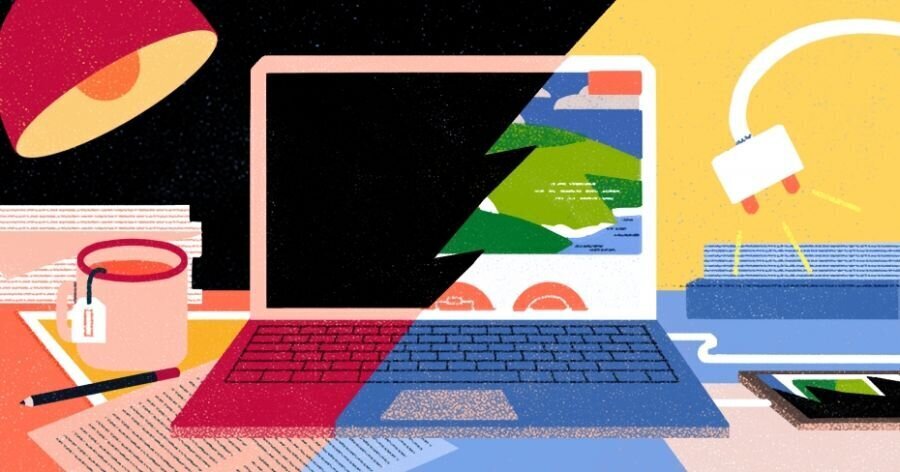We tried to start a business together and it failed miserably
By: Sandra Phinney and Melanie Chambers on May 22, 2020
Money is wrapped up in all kinds of unpleasant emotions. Shame, embarrassment, fear, regret. We all experience these feelings about our money at one time or another, but we’ll be damned if we actually talk about it. To help eliminate the stigma around making mistakes with our money, or feeling scared about our financial security, we’re introducing Financially Naked — a series where people have the space to bare all about their most vulnerable financial experiences, mistakes, and regrets. Because let's face it: we all have them.
It all started with “The July Project.” In 2015, we made a promise to each other that each day in July we’d do something different within a 100-kilometre radius of our homes in Yarmouth, Nova Scotia, and Toronto, Ontario, and blog about it on our respective websites. As seasoned travel writers, we’re no strangers to telling stories about far-away places and adventures, like hiking North Africa’s highest mountain peak, cycling 105 kilometres entirely uphill in Taiwan, and travelling to countries like Jordan, Thailand, and Vietnam. But this time, we wanted to see our own neighbourhoods from a different perspective.
We visited local cemeteries. We learned how to cook Russian, Lebanese, and Mexican meals. We swam in the nude. As we posted our experiences and subsequent insights online, we started to develop a small following. Readers, it seemed, were inspired. In the fall of 2018, we decided to create an online business based off of this concept, and roll it out across Canada. We called it HeartSong Travel. Our instructions to readers: “Go somewhere in your own backyard; do something that makes your heart sing and tell us about it.”
We intended to start a nation-wide movement where Canadians would post their local travel experiences and upload photos on the HeartSong Travel website. How did we plan on making money? By securing sponsorship from provincial tourism and destination marketing organizations in return for free stories, photos, and promotion. Tourism New Brunswick came on board straight away with $5,000. We were chuffed. We figured other provincial tourism departments would offer the same, and cities and regional tourism offices would offer $2,500 — numbers we admittedly pulled from the sky.
Neither of us had any previous business or fundraising experience, so we turned to Google to learn how to create a business plan and marketing proposal, and a projected three-year budget. We secured a $10,000 loan from the Canadian Business Development Corporation and spent $8,000 of it hiring a company to create a logo and a website.
A week went by, then two weeks... then two months. Nothing happened on our website
Then the no’s started rolling in. In December, we met with reps in Prince Edward Island—nada; Newfoundland—a no-go; Nova Scotia—zilch. Our efforts in Ontario also netted a big fat zero. Each organization questioned our lack of social media strategy and/or wanted to “wait and see.” That should have been enough to stop us, but we still expected Canadians to flood us with stories. So we launched the site anyway on the first day of spring in 2019, and set up a corresponding Facebook page and Instagram account. Surely, we thought, once we could show the provinces how successful the site was, they would come on board. A week went by, then two weeks... then two months. Nothing happened on our website. Not one thing.
That summer, we held small focus groups to figure out what was wrong. As it turned out, the site was gorgeous but it was a lemon. We were naive to expect readers to submit stories and photos on the spur of moment. Plus, there was no way for participants to interact with each other or comment on one another’s experiences, which meant the site lacked the very thing we were trying to cultivate: a sense of community. We also had no clue about the importance of analytics, nor did we have a web and social media strategy.
As the summer rolled into the fall, the balance of our loan loomed large. We were each responsible for $5,000 of it, and we’d already dug deep into our own reserves, shelling out another $3,000 each for other various expenses. We’d devoted hundreds of hours to HeartSong Travel, and it was starting to affect our livelihoods. Because we’d put some personal projects on hold, our collective freelance income took a hit of about $15,000.
Emails had begun to fly back and forth between us, mapping out the pros and cons of hanging on or letting go. We could help Canadians get excited about their hometowns, and eventually make money doing so. But there were also teaching commitments to tend to, and book proposals on hold. Salvaging the operation would require a major overhaul: new business plan, deeper pockets, and incessant work. Our hearts were saying “carry on,” but our heads were saying “halt!” One morning in early October, a phone conversation clinched it. We spoke that day not as owners of a company but as friends. We both knew what we needed to do but we hadn’t yet voiced it out loud to each other. “I think we’re done,” one of us said. “Yep, it’s time to pull the plug and move on,” the other agreed.
In equal parts, we felt both the sting of our failure and the relief of our decision. We had visions of travelling across the country to promote the business and instead, we were both plagued by the second-guessing of where, exactly, we went wrong. But after having had the time to reflect on it, along with our families’ support, we see what’s most important. We weathered a storm together and remained friends. In fact, we’re closer than ever. That’s worth more to us than making (or losing) gobs of money.
If we ever find the time, money, and energy to resurrect another project, we know what we’d do differently. And we still believe there’s a case for exploring our own backyards and sharing those discoveries, especially as we come out of this pandemic. Travel shouldn’t just be associated with taking long journeys to exotic places. The exotic is right here under our noses — full of awe-inspiring people and places we’d never find in a guidebook.
Illustration by Jeannie Phan.


